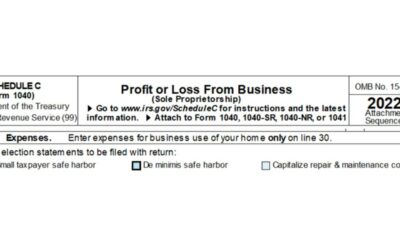Understanding How to Prepare and the Available Options
So, you got that initial tax notice that you owe the IRS and ignored it. Then, you started receiving bills stating that you owe and this time it includes penalties and interest. You ignored it. Why? Because it’s overwhelming to be indebted to the IRS when you can’t pay. This is not like that doctor bill that goes to collections, dings your credit, and then gets written off. The IRS does not write off debt easily. However, for those that know the ropes, the IRS writes off millions every year.
Prepare to Request for Tax Relief
When the IRS considers forgiving your tax liability, they look at your present financial condition first. In order to qualify for debt relief, a few things need to happen.
- Find out how much you owe. You may do this by setting up an account with the IRS. Once your account is set up, you may access all of your records to verify how much you owe and for which tax years and what types of tax. If you have not yet filed some tax years, this number may not be all inclusive.
- Get in compliance. You will not be eligible for relief until all of your back tax returns are filed and you are in a “compliant” status for the most current period.
- Gather all your financial records. You will need to account for every penny you bring in and every penny you spend. When applying for an Offer in Compromise or other debt forgiveness you must prove your case. The IRS will review your current financial situation with a fine-tooth comb first. The IRS will keep coming and taking until you take action to show that you cannot realistically pay or that collecting all at once will create a financial crisis.
What are the options for relief?
The IRS Fresh Start Program is a program offering you the ability to pay your tax debt based on what you are able to pay either in a lump sum or over a specified period of time. Payments are based on your current economic situation, your expected future income, and allowed repayment timelines and considers the remaining time on the collection statute for each tax year for which you owe taxes. There are three repayment options under Fresh Start.
- An Offer in Compromise – This is when you, the taxpayer, makes an offer to clear your debt for less than the total amount owed. There are basically two ways to calculate and to pay under this method if you assert that you qualify under “doubt as to collectability.”
- Partial Pay Installment Agreement – This is typically where you negotiate to pay your debt over the life of the Collection Statute but the amount that you are able to pay each month multiplied by the months remaining in your statute equal something less than your total debt.
- Extended Installment Agreement – This is where you agree to pay your IRS debt back for up to 6 years with no further penalties or interest incurred. Payment amounts may change based on your current income and assets.
- Installment Agreement via Direct Bank Withdrawal – If you have had a tax lien placed on you, this is your best bet. If you are repaying your debt via direct debit, you may apply for a Tax Lien Withdrawal. Debts over $25K require direct debit anyway.
- Penalty Abatements – This is when you apply for and qualify under abatement of some or all of the penalties assessed in your case. Some penalties are not eligible for abatement but many are.
Click here to continue reading Part 2 of this series.
If your taxes owed are starting to pile up and you’re now facing penalties and interest, you may want to look into tax debt relief. That’s what we specialize in. We are here to help.




